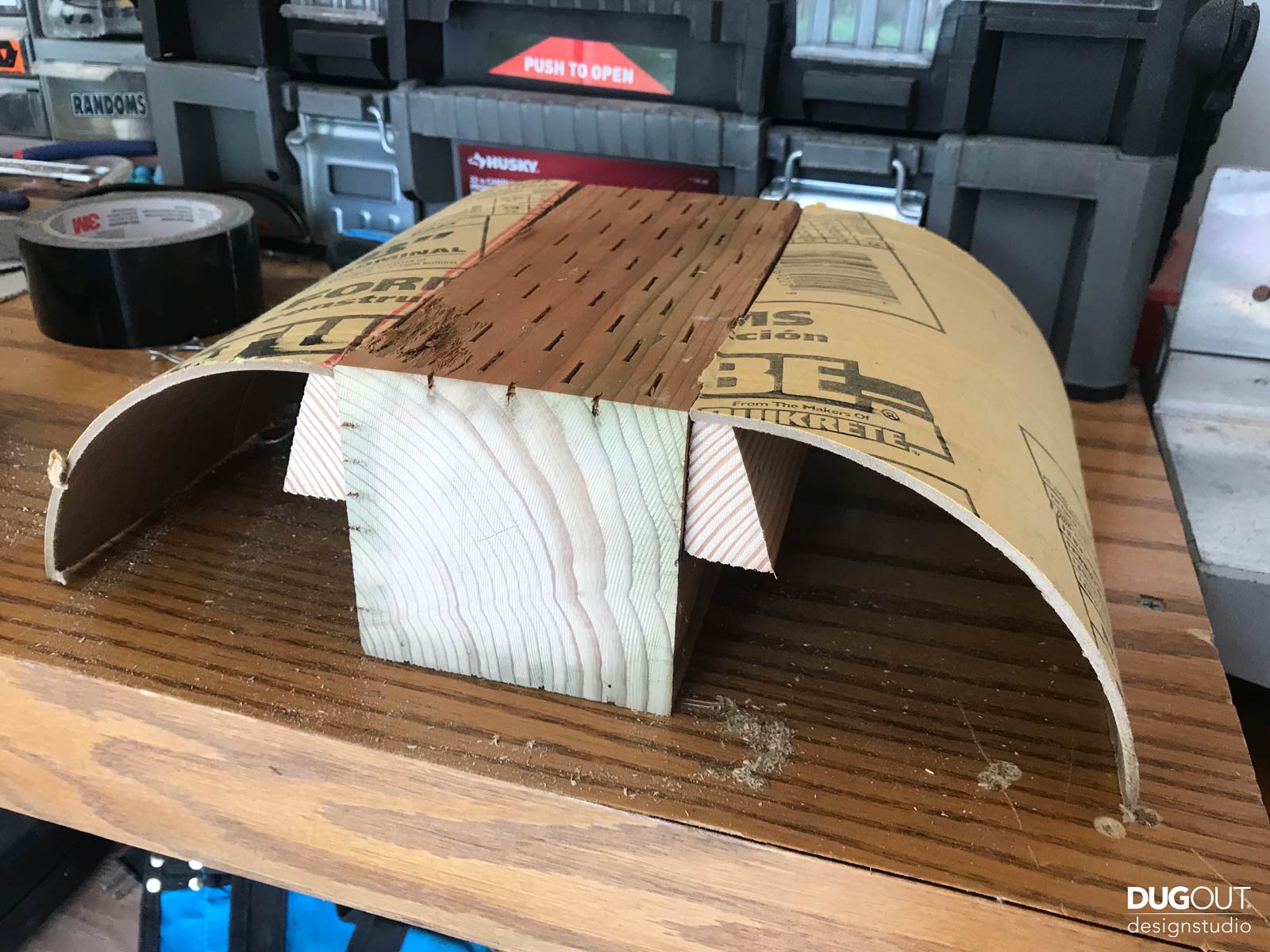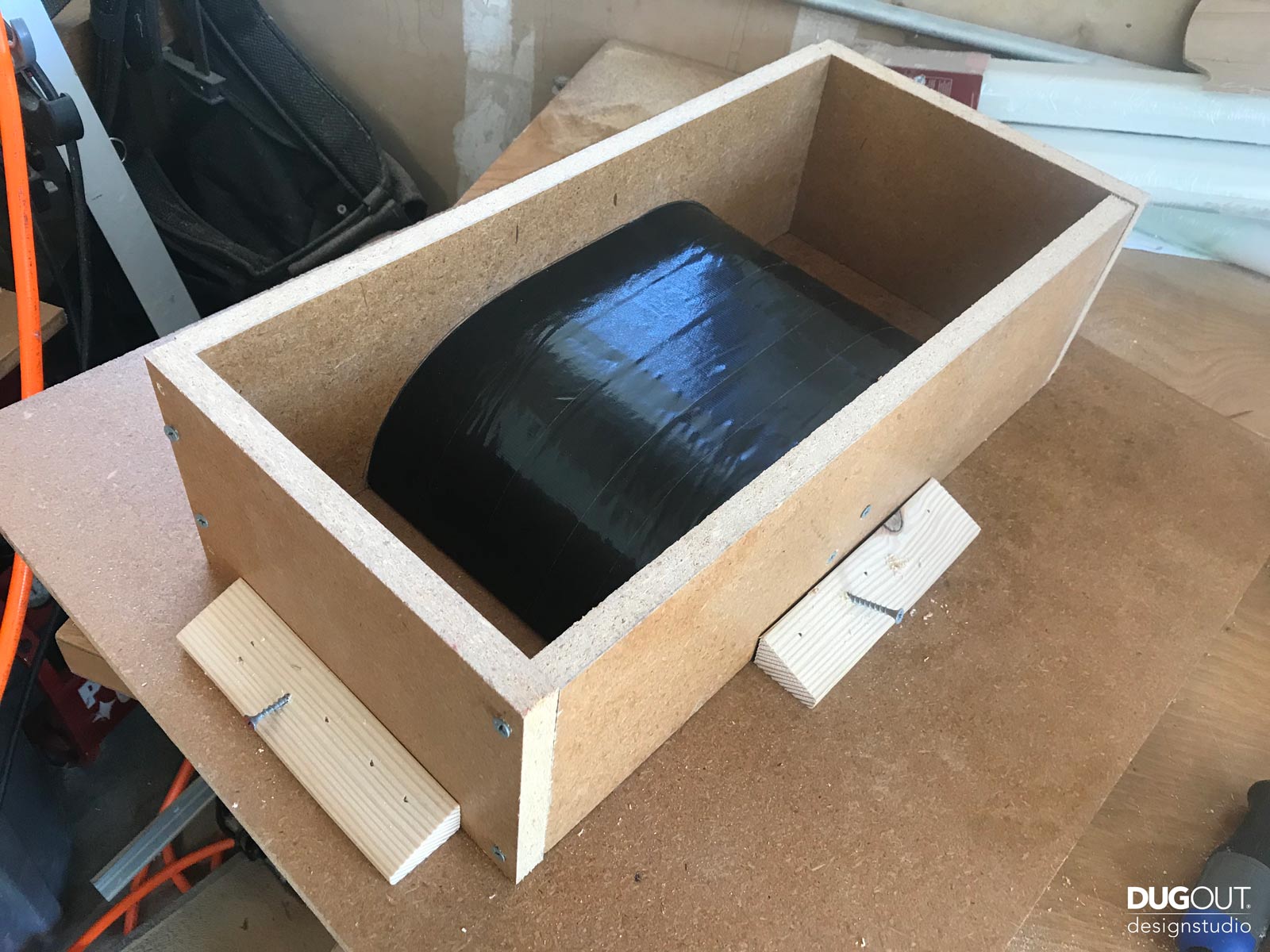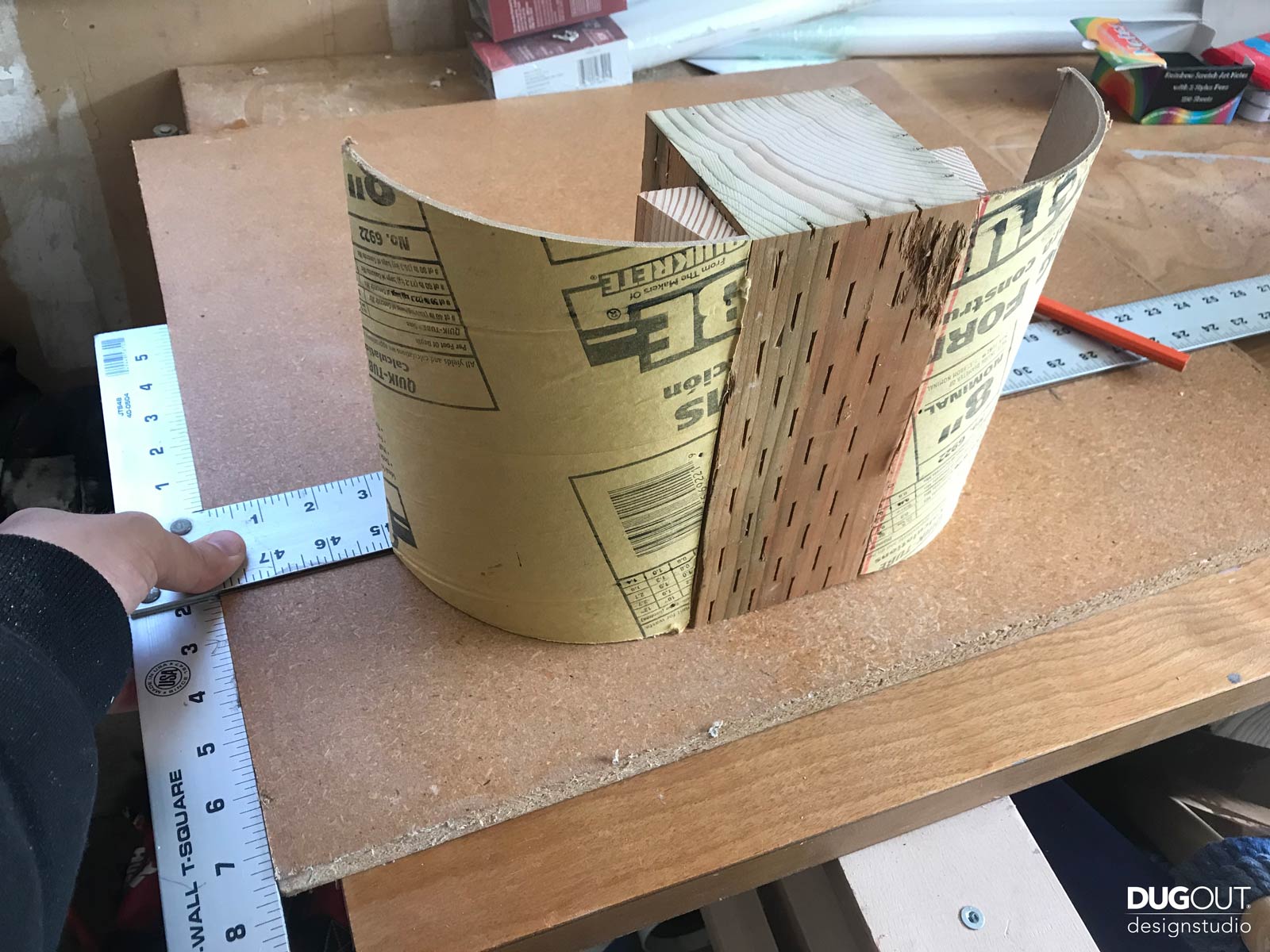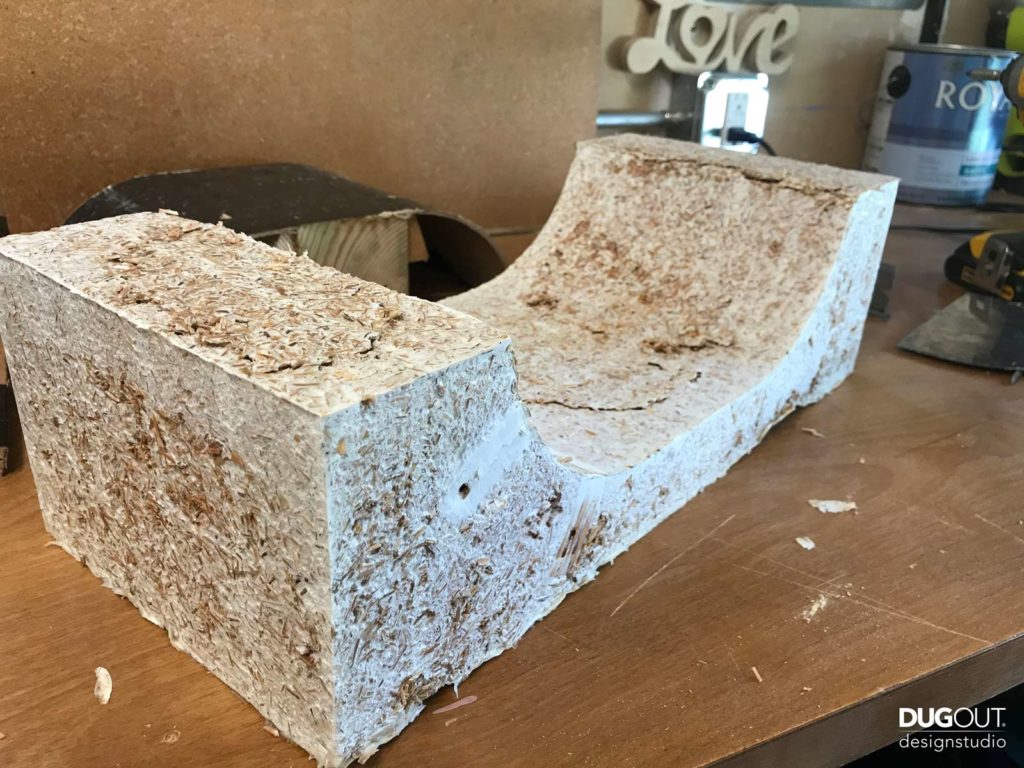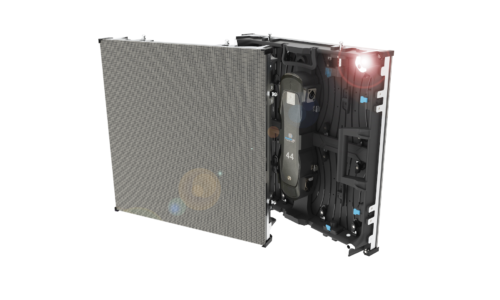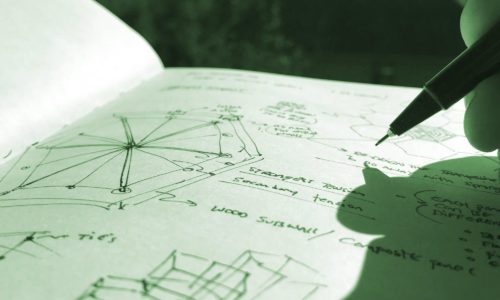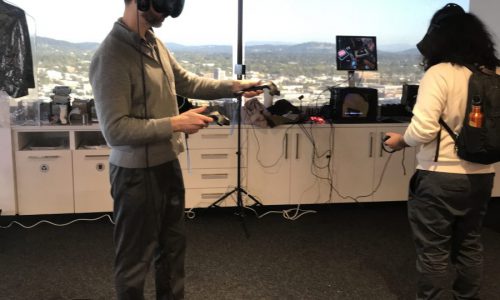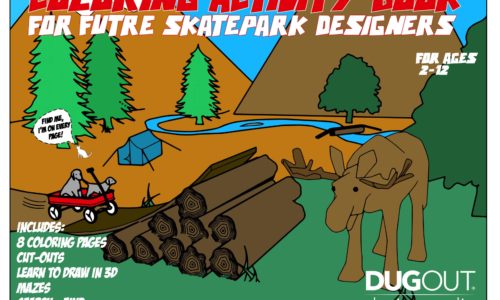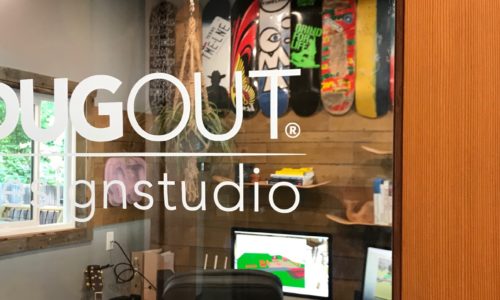
Eco Innovation R & D: Growing Mushroom Skateparks
- Design Development, Sustainability, Technology
- circular economy, construction, eco innovation, eco-friendly, eps foam, indoor action sports, industrial design, mini-ramp, mushrooms, mycelium, skatepark design, sustainable design
- May 21, 2020
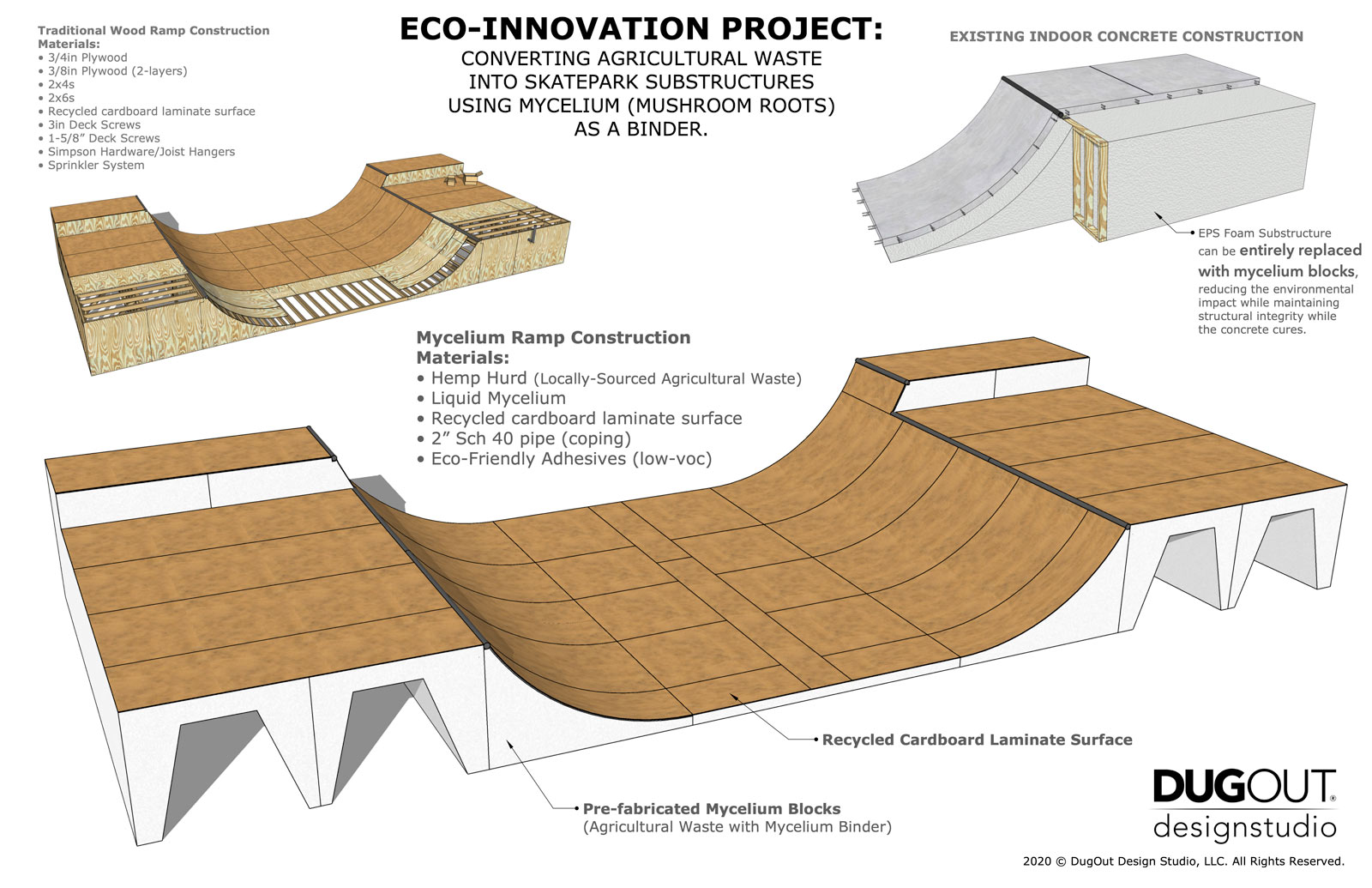
Room To Grow
The standard of indoor and above ground skatepark design and construction has changed very little over the past few decades. Wood framed ramps with a smooth skate surface like Gator Skins or Skatelite have been the industry standard. Within the past decade, many indoor facilities have made the switch to above ground cast in place concrete form, utilizing an EPS foam base for filler…and lots of it. DugOut has made it our mission to push the boundaries of what has been done and explore more sustainable solutions and technologies than what we have now. This particular project is focused on utilizing local agricultural waste products in combination with the amazing natural powers of mushroom root structures, known as mycelium.
Even though lumber is a relatively eco-friendly option for building materials, the use of formeldahyde-laden plywoods adhesives and mechanical fasteners adds to the overall carbon footprint of these projects. In lieu of shipping materials around the world for production and distribution, we wanted to find a way to utilize local waste materials and minimize the strain on natural resources and the environment.
By examining what we currently have in abundance, we aim to utilize agricultural byproducts such as corn husks, rice hulls, hemp hurd and even recycled paper products by turning them into technical nutrients to replace current harmful products and methodologies. Looking to nature for solutions on how to turn these resources into highly valuable materials. As designers, we are continually searching for ways to reduce consumption and minimize waste and reduce environmental impacts.
R&D: Phase 1
Using Renewable and Reclaimed Materials
As always, we try to reuse as many materials as possible, and as luck (and a little creativity) would have it, we were able to reuse a small section of sono-tube I had in the shed, a chunk of 4×4 post and and old shelf that we reused from an old kitchen renovation project. It also worked out nicely that the volume of my mold was the exact size for the material in my Ecovative mycelium growing kit, resulting in no waste. The main goal of this first exercise is to begin to understand the properties of the materials we are working with, and to test, on a small scale, the possible application for the skate and athletic industries, via a mold in the shape of a mini-ramp. A future post will be made to show various tests to further research properties of the mycelium structure, such as, strength and flammability. Below is a look at how we activated Phase 1.Constructing a Mycelium Mini-ramp Prototype
This is a very exciting project for us and has aligned with our mission to explore and innovate more eco friendly ways to design and build equipment for the action sports industry.
Mycelium is the root structure of fungi that consists of a mass of branching threadlike hyphae. These branches interconnect natural fibers (corn husks, Rice Hulls, Hemp Hurd, etc.) as a natural bonding agent that does not include resins or adhesives as a binder. The ultilmate goal will be to source local natural waste from within our community (Portland, Oregon) and work with local organizations that already harvest unwanted invasive species or agricultural waste products.
During our early research phases we discovered Ecovative Design, a company that has been developing a method of creating Mycelium blocks by infusing agricultural waste with mycelium and allowing the root system to spread and tie the substrate together. After a specific feeding and growth period, the items are baked to stop the growth and you are left with a solid block that can be formed into sustainable products that aligns with the philosophy of a 4th industrial revolution.
Naturally, since we specialize in the action sports industry, we wanted to start testing this out on skateboard ramps and away we go!
Get It Growing
We purchased a grow.bio starter kit from Ecovative Design to start small and work towards a final working model. Hemp hurd, grow bag and infused mycelium were provided in the kit. We just needed to add four tablespoons of flour and three cups of water per bag to activate the mycelium growth. Stage one leaves the bag in a cool area out of the range of sunlight for 5 days. The mask and gloves were suggested to protect the mycelium from my outside contaminants.

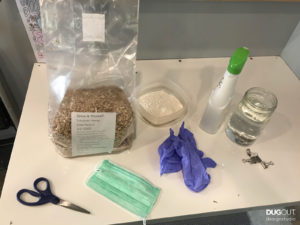

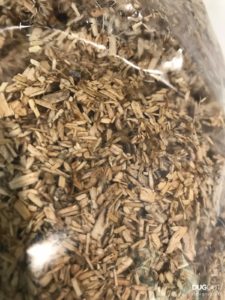
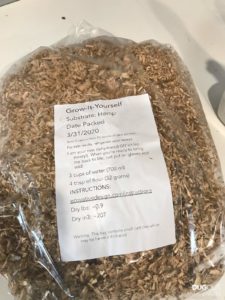
Stripping the form
After the 7 days of growth within the form, I was finally able to see how this first prototype performed. We still have 2 days of air drying followed by a half hour in the oven to stop the growth process. Overall I'm amazed at this process. The form held its shape (for the most part) with clean crisp edges. A few patches ripped out when removing the form (the mycelium grew into the duct tape a bit). The wood "ribs" that I added on one side seem to be fully embedded in the ramp, which will be used to fasten a surface material using screws or adhesive (skateable surface). The other side of the ramp will be covered with concrete to simulate the application of indoor concrete skatepark construction.
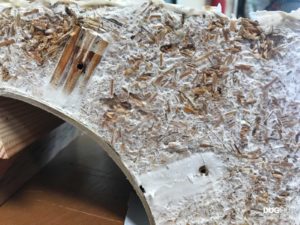
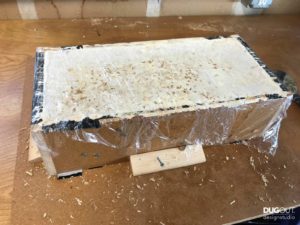

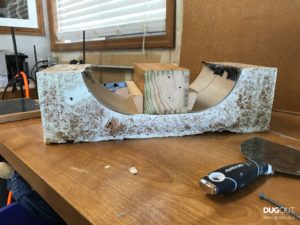
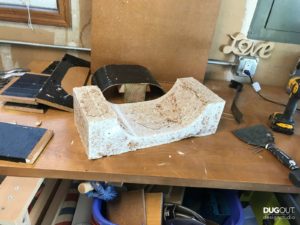
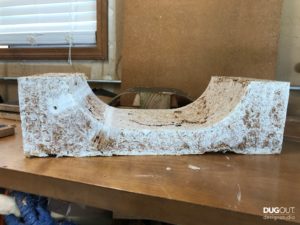
Adding the Surfaces
After the mycelium substrate had a chance to fully dry, it was time to stop the mycelium growth process and bake the form for 30 minutes at 200 degrees F. At this point, the form was still a little spongy, but firmed up a little as it cooled. There are some additives to make a more dense composite that we will be trying out for the next round of testing. After adding a nice earthy mushroom aroma to the house (which was not as strong as I thought it would be), it was time to test our two initial applications: Concrete and laminated wood surface. Using what I had on hand, I was able to craft concrete forms out of cardboard (not very durable, but worked fine for this model) and 2in long push-pins to hold them in place. I also added some concrete anchors(wood screws) to hold the concrete to the substrate. Finishing the concrete was a bit tricky using a mini makeshift trowel. In the end, it was exciting to see the two concepts applied to the base for this first round of prototyping.
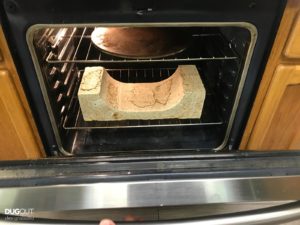
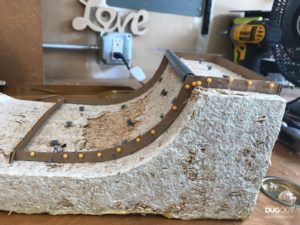
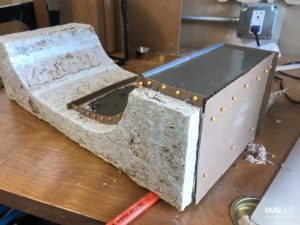
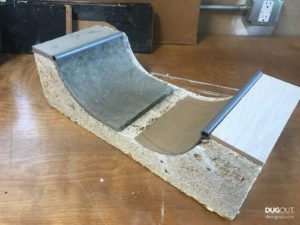
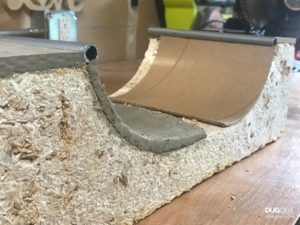

What's Next?
Now that we have had a chance to test our initial theories on a micro-scale, we are going to begin testing various properties of the mycelium structure, such as strength, density and flammability. I am going to keep this first model for nostalgic purposes and will create more simplified block structures to experiment with. Stay tuned for the next round of testing as we dig further into the exiting world of mycelium!
